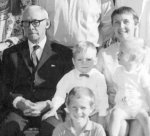Escape of the Boer Swimmers

By Tom Brown
- 52 reads
During the South African War (October 1899 – May 2002) many Boers were taken prisoner and exiled by the British Army. Most of the prisoner of war camps were housed in foreign countries and on islands, making escape seemingly impossible.
Colombo Harbour
In 1901, Willie Steyn, Piet Botha, Ernst Hausner, Louw Steytler and George Steytler were on their way to the Diyatalawa prisoner of war camp on Ceylon (Sri Lanka). They were on the ship the Catalonia and through daring escapes hardships and challenges returned to their homeland.
On board the Catalonia on 10 Jan 1901 anchored in the Port Colombo, as part of a large group of boer prisoners being taken to shore in groups, on a dark, moonless night Willie Steyn and his four mates managed to escape from the ship with 600 prisoners headed for Ceylon. As the first group were taken to shore Steyn and his mates made plans to escape, equipped with ropes, and just before midnight 13 Jan swam to a nearby French vessel.
Taking turns silently between trips Steyn and the four of his fellow prisoners had lowered themselves one by one into the sea, taking turns silently each waiting until his predecessor had got away undetected by the guards on board and in vessels patrolling around the ship.
These “five swimmers” were picked up and taken on board as honorary guests by a Russian ship docked, the Kherson.
The five Boers thus traveled through Russia, Germany, and the Netherlands on their way returning to South Africa.
Indian Ocean Voyage
The five men on the Russian ship through the Suez Canal and the Dardanelles travelled up to Feodosia on the Crimea, then they travelled to St Petersburg, Berlin, Utrecht, The Hague and Amsterdam.
At Aden and again at Suez they had been hidden from the British in the chimneys while the ship was searched. The Russians received them as honorary first-class passengers, and protected them even later after they had gone ashore.
Europe Overland
On arriving on land the local people had a great upheaval made of the Boers. The German consul entertained them and finally arranged passage overland to the capital of Tsarist Russia at the time, St. Petersburg.
There too they had a heroes welcome they were wined and dined, attended concerts and invited to parties.
At last they were helped finding their way to the Netherlands. At the time Paul Kruger was already in Holland, where he was brought with the Dutch government the war considered as lost. The five men were received by Pres. Kruger who dubbed them “The Five Swimmers”.
They returned to South Africa via the South-West. After a short stay in Amsterdam, the five embarked under assumed names on a German ship, from Hamburg to German West Africa.
Back Home
Landing at Swakopmund on 6 April 1901 and with considerable difficulty, continued their adventures to roam again for months over the Namib desert and barren North Cape on foot, while avoiding the many coloured English soldiers on the way.
They hoped to join up the men of Conroy, the young rebel commandant whose headquarters were at Kakamas but were unsuccessful. Willie Steyn, Piet Botha, and Louw Steytler rejoined Boer commandos with generals Maritz and Smuts in the Cape Colony during the guerrilla phase and continued fighting, one was fatally wounded the other four survived.
For further reading, the fascinating true adventure of “The Great Boer Escape” by Willie Steyn and “The Five Swimmers" by André Wessels.
Family Steyn
Older family members told us that Willie Steyn was the brother of my great-grandfather Eustace who was a child in the concentration camps of the English during the Boer war, later becoming chief inspector for the Transvaal Education Department and was a headmaster of a farm school age at 17.
Very few children survived those camps, as war atrocities and genocide together with Lord Kitchener's scorched earth policy. This also called the second Boer War. The British army had 500 000 men and the Boers numbered only 88 000.
The first, "die Vryheidsoorlog" was an overwhelming victory for the Boers the English being totally unprepared for the terrain and experienced commandoes.
~ ~
I was the only of the great-grand children who knew Eustace Steyn, my brother was a baby. He would always greet me as "stick-in-the-mud" and he thought that it was very funny I could never understand why. I remember him taking me to the circus once and remember he drove a really big shining pitch black solid old automobile.
Many of us new my great-gran she was very fond of my mother, her second brother was named Steyn de Vos.
The story was that Willie Steyn and his friends were hid by the Russians in the steam ship's chimney when the English came to search the ship, and that Willie named his son for the captain, as uncle Vladimir. As many, our bloodlines may be drawn to Pres. Steyn of the Free State.
My great-grandfather Frank Brown fought for the English he was a bugler, as only just a boy, later he was one of the handful to survive Delville Wood in the Great War. There were Irish miners too, but they fought on the Boer side.
- Log in to post comments
Comments
Wars can seem very confused
Wars can seem very confused at the time. And even more afterwards. Then and now. Complex wrongs, often by both sides, especially as some can give way to tempers, and misinformation too. But some real injustices, and needs for self-defence where there are real threats, or defence of others, and bravery. Rhiannon
- Log in to post comments


